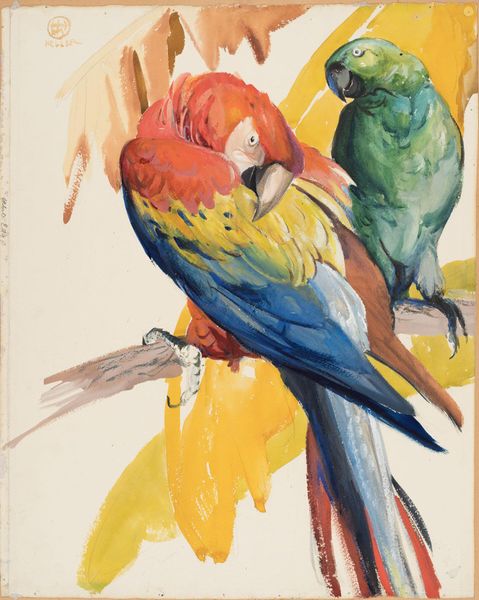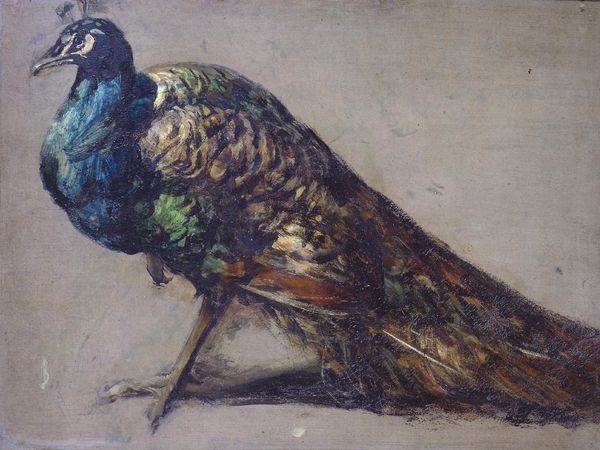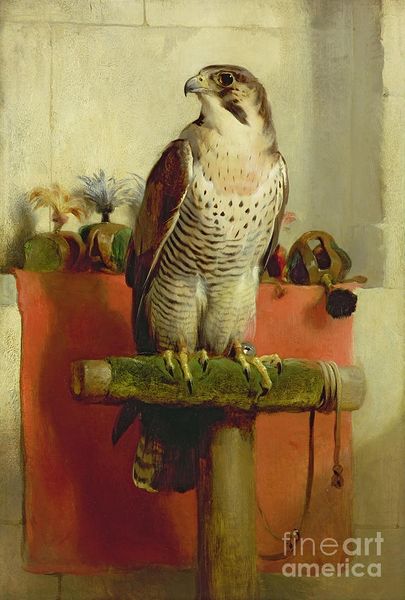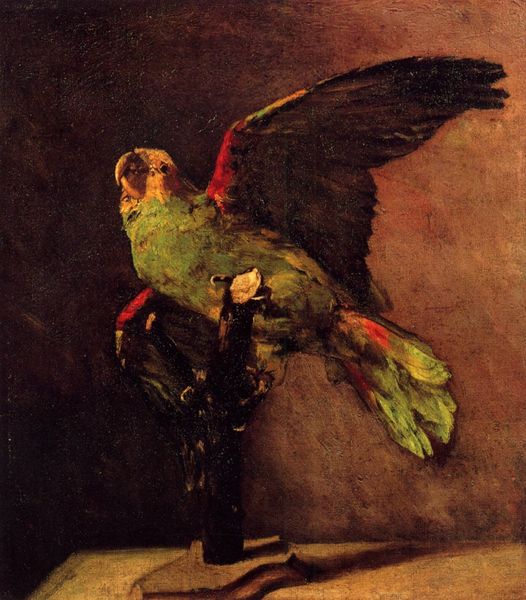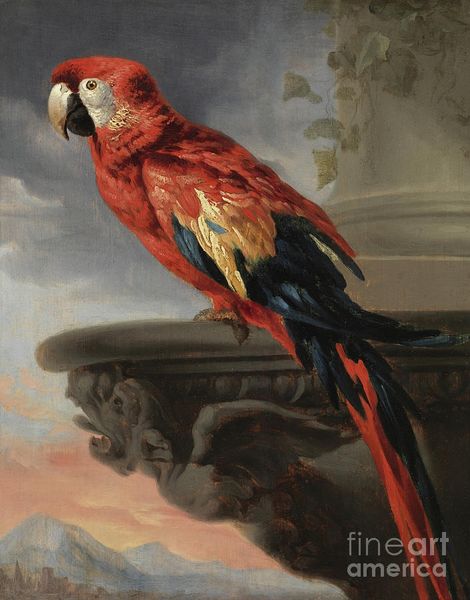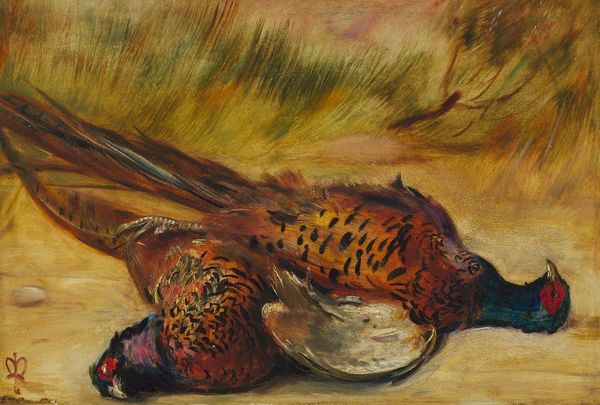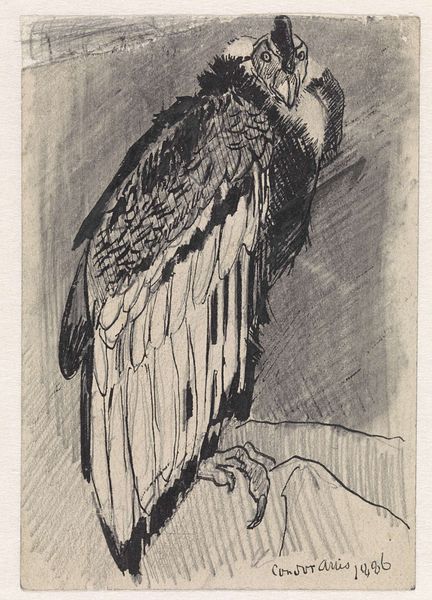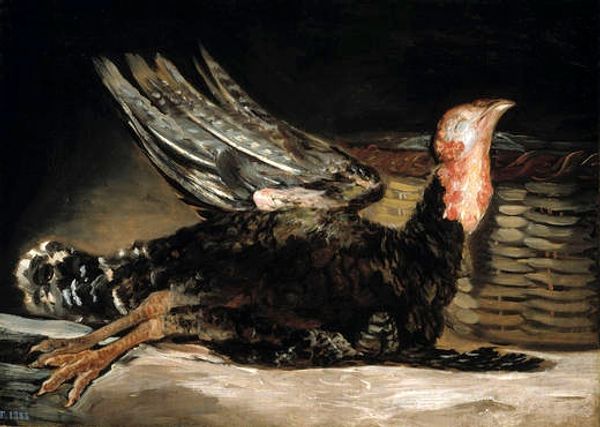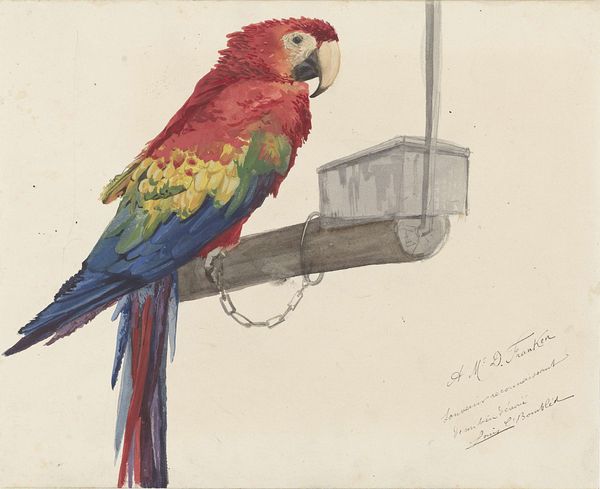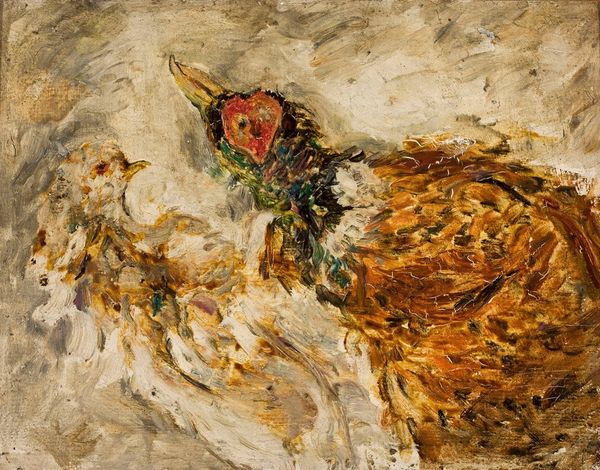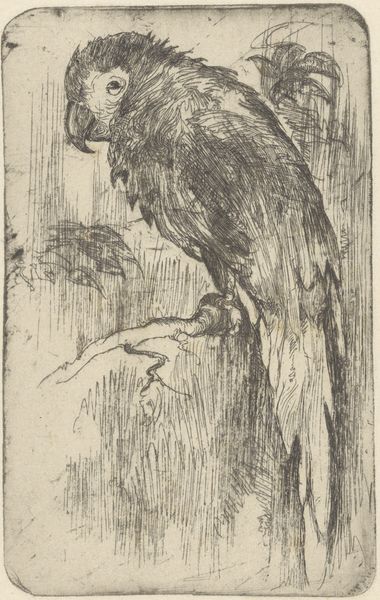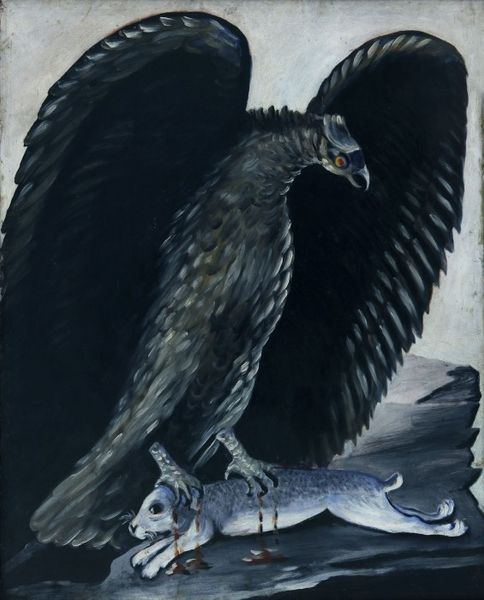
painting, oil-paint
#
portrait
#
painting
#
oil-paint
#
oil painting
#
realism
Copyright: Public domain
Curator: I'm drawn to the rough texture in this work, the brushstrokes almost seem unfinished. Editor: It's intimate, isn't it? Immediately, I notice the vividness, but also something feels caged. Two parrots perch together in Josè Garnelo's oil painting titled "Papagallos," though the date of its creation is unconfirmed. The parrots are centered and the surrounding composition appears to be loosely captured. Curator: Caged how? Well, parrots are so evocative as status symbols in colonial visual culture, these parrots become more than just birds on a branch; it's about how they represent power dynamics. The raw technique almost reads as critical, doesn't it? Editor: Precisely. There's a tension there, I think. It makes me wonder about exoticism and displacement and what Garnelo might be signaling with these feathered bodies confined to this domestic setting. Curator: Thinking about the time this piece might have been made, there’s this impulse within Realism to depict everyday life and, more than that, to engage with societal structures. Perhaps the artist wants us to acknowledge how parrots often symbolize wealth and control, and their place in the social order? Editor: Definitely. We have to question how ideas of access are portrayed, considering also how artistic expression is received. The ambiguity of that background pulls us towards thinking about these tensions too. It could be read as confinement, yes, but also as though the viewer's position as the consumer perpetuates that sense of ownership. Curator: The swift strokes definitely create a mood of something impermanent. Do you see the white brushstrokes at the background as being deliberately ambiguous and a counterweight to their rich plumage? Editor: Yes, it suggests movement and an energy held within these living creatures, waiting, observing and possibly in protest to these power relations. Curator: Considering all that, and those rough brushstrokes that you called “unfinished,” perhaps we can understand them as speaking back to societal expectations and assumptions of privilege during a moment in art history where there was much conversation about artistic technique, visual language and its possibilities. Editor: What a striking commentary then!
Comments
No comments
Be the first to comment and join the conversation on the ultimate creative platform.
